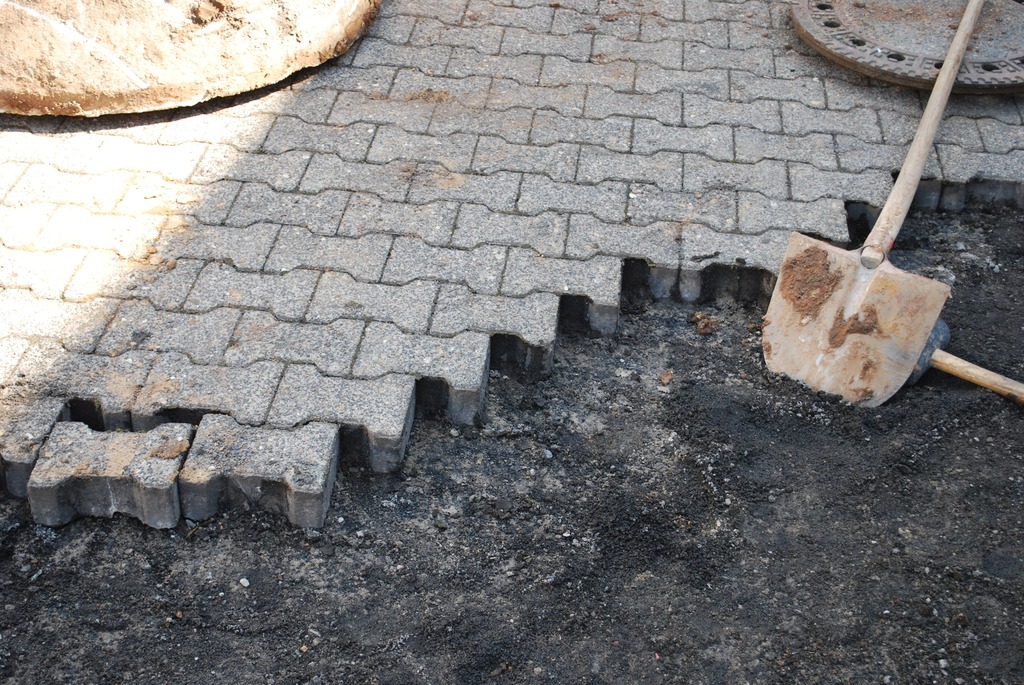One of the most common property maintenance activities is regular asphalt pavement repair.
This could mean doing a complete overhaul of the entire pavement—which involves removing and replacing the entire pavement altogether. Also, this can be a simple task like placing a new layer over the old pavement, also known as asphalt overlay.

Asphalt overlay is a process in which a new layer of asphalt is laid over an existing road surface. This can be done for various reasons, such as improving the appearance of the road or repairing damage caused by weathering or wear and tear.
The process of laying an asphalt overlay is generally fairly straightforward. Still, it is important to ensure that the new layer is properly compacted and sealed to prevent future problems.
In some cases, an asphalt overlay can also be used to create a completely new road surface. This involves removing the existing top layer of asphalt and replacing it with a fresh layer.
An asphalt overlay is applied to roads, parking lots, and driveways in most cases. The thickness of the asphalt layer will vary depending on the condition of the existing pavement and the desired outcome of the treatment.
However, most overlays are between two and four inches thick. Asphalt overlays are typically installed by professional paving contractors. The contractor will first clean the existing pavement surface, then apply the new asphalt layer.
Now, since you know what asphalt overlay is, does it really make sense? In this post, we shall discuss the pros and cons of asphalt overlay and help you make the right decision. Read on for more information.
Read Also:
Asphalt overlay is generally a very cost-effective solution, especially when compared to complete replacement. The costs associated with an asphalt overlay are typically much lower than completely removing and replacing an existing pavement.
This is because the process of overlaying new asphalt requires less labor and materials than a complete replacement.
According to the Jacksonville experts from CSG Sealcoating, another advantage of asphalt overlay is that it can be completed relatively quickly. In most cases, an asphalt overlay can be installed in just a few days.
This means that you won’t have to deal with the inconvenience of having your property out of commission for a long period of time.
When properly installed, an asphalt overlay can extend the life of your pavement. In some cases, an asphalt overlay can even double the pavement’s lifespan.
This is because a new asphalt layer will protect the existing pavement from weathering and wear and tear.
One downside of asphalt overlays is that they may not always be the best solution for every type of damage. A complete replacement may be the only way to repair severe damage in some cases.
However, in most cases, an asphalt overlay will be able to repair moderate damage successfully.
Although an asphalt overlay can extend the life of your pavement, it is important to keep in mind that it will not last as long as a complete replacement. In most cases, an asphalt overlay will need to be replaced after about 10 to 15 years.
Another potential downside of asphalt overlays is that they may not always improve the appearance of your pavement. This is because an asphalt overlay will generally match the existing color and texture of the pavement.
If you are hoping to change the appearance of your pavement, then you may want to consider a different solution.
Now that you know the pros and cons of asphalt overlay, there are a few important considerations to consider before you decide.
One of the most important things to consider is the condition of your existing pavement. For an asphalt overlay to be successful, the existing pavement must be in good condition.
This means that the pavement should be smooth and even with no major cracks or damage. If your existing pavement is in poor condition, an asphalt overlay may not be the best solution.
Another important consideration is the type of damage you hope to repair. As we mentioned before, asphalt overlays are not always the best solution for every kind of damage.
If you are hoping to repair severe damage, you may want to consider a complete replacement.
Another thing to keep in mind is the appearance of your pavement. As indicated earlier, an asphalt overlay will generally match your pavement’s existing color and texture.
Therefore, you may want to consider a different solution, hoping to change the appearance of your pavement.
Last but not least, it is important to consider your budget when making a decision about asphalt overlay. In most cases, an asphalt overlay is a very cost-effective solution. However, if you have a limited budget, you may want to consider a less expensive option.
Asphalt overlay is a popular solution for repairing damage to asphalt pavements. There are many advantages to using an asphalt overlay, including the fact that it is less expensive than a complete replacement and can be completed quickly.
However, there are also some disadvantages to using an asphalt overlay, including the fact that it may not be suitable for all types of damage and may not last as long as a complete replacement.
When deciding whether or not to use an asphalt overlay, it is important to consider the condition of your existing pavement, the type of damage you are hoping to repair, the appearance of your pavement, and your budget.